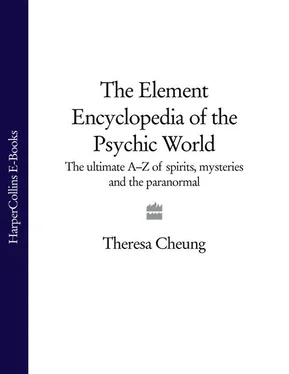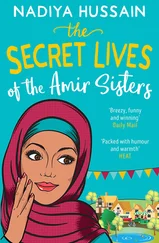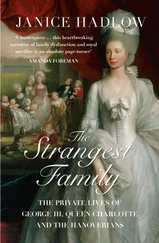In the past half century or so many Westerners have tried to learn the techniques for breathing, meditationand mind control that Eastern yogis have studied for millennia. In recent years psychiatrist Stanislav Grof developed a method that combines breathing and meditation and called it Holotropic Breathwork; it helps individuals enter an unordinary state of consciousness for psychic healingby using evocative music, accelerated breathing, energy work and mantradrawing. Aspects of this meditation involve exploration of the inner self and spiritual opening.
Breathing exercises
Simple breathing exercises are thought to help give you quick access to psychic states of mind. One Eastern technique is to visualize, with each in-breath, drawing in coloured light - pink light for harmony and quiet contemplation and white or gold light for spiritual energy - and slowly breathing out black mist or smoke as all the negative energies leave the body.
A yoga breathing exercise that is thought to be wonderfully effective for saturating your aura and your body with energy is alternate nostril breathing.
Using your right thumb, close your right nostril and inhale slowly through your left nostril for a count of four. Then keeping the right nostril closed, use your fingers to close the left nostril, so both nostrils are closed for a count of eight. Then, keeping your left nostril closed, remove your thumb from your right nostril and exhale for a slow count of four. Switch nostrils, closing the left nostril and inhaling through the right nostril for a count of four. Close both nostrils again for a count of eight, and exhale slowly for a count of four through the left nostril. Repeat the whole exercise four or five times.
The Bridge of Souls in mythology and folklore is the heavenly road soulsof the dead must travel in order to get to the afterlife. The most common motif used for the Bridge of Souls is that of the rainbow.
In Hawaii, Polynesia, Austria, Japan and among some Native American tribes, the rainbow is thought to be the path souls take on their way to heaven, and has been called a bridge or ladder to higher or other worlds. The Russians call the rainbow the ‘Gate to Heaven’. In New Zealand dead Maori chiefs are believed to travel up the rainbow to their new home. In parts of Germany and Austria, folklore suggests that children’s souls are led up the rainbow to heaven, and in some parts of England it is considered unlucky to point at a rainbow.
People all over the world have different ways of looking at and understanding rainbows. For some they suggest magical possibilities, for others a rainbow indicates that a project is going to fail - ‘building rainbows in the sky’ - but whenever a rainbow appears, and however rationally it can be explained as a natural phenomenon, even the most hardened sceptic cannot help but be struck by its magic and its beauty.
The broom is intimately connected with witchesand witchcraft. It was commonly believed that witches anointed their bodies with a salve given to them by the devil that enabled them to fly through the air upon a variety of sticks or stems, including broomsticks. The choice of the broom or besom as a likely means of transport is probably due to the association between brooms and female domesticity, though male witches were thought to ride in this way as well as women.
In Eastern European folklore a broom may be used in exorcismceremonies to sweep evil spiritsout the door. It is also thought that stepping over a broomstick, placing it under your pillow or putting a broom across a threshold will offer protection against evil spirits and ghostsat night.
An English manor house in Norfolk has been haunted for nearly 300 years by the so-called ‘Brown Lady’, who is believed to have been captured once on film in one of the most famous spirit photographsever taken.
Raynham Hall is the seat of the Marquesses of Townshend. The Brown Lady is believed to be the ghostof Lady Dorothy Townshend, wife of the second Marquess of Townshend and sister to Sir Robert Walpole, the first prime minister of England. At the age of 26 Dorothy married Lord Charles Townshend. According to lore when Townshend discovered that Dorothy had been the mistress of Lord Wharton he locked her in her apartment until her death from either a broken heart or chicken pox or a fall down the stairs.
Until 1904 a portrait identified as Lady Dorothy hung in the hall. In the portrait the woman is dressed in brown and has large shining eyes. It was said that the portrait looked normal by day but at night the face became evil looking.
Over the centuries there have been a number of reports of encounters with the Brown Lady at Raynham Hall. In the early nineteenth century George IV allegedly woke in the middle of the night to see a woman dressed in brown. He was said to be so terrified that he refused to stay another hour in the house. In 1835 she was witnessed several times by a Colonel Loftus, a guest staying in the castle. Not long after, novelist Captain Frederick Mar-ryat was invited to a ball at the house. He allegedly encountered the ghost in the corridor and when it grinned diabolically at him he shot at it. The bullet was said to have gone right through the ghost and was later discovered lodged in a door behind where the ghost appeared.
In 1926 the ghost was seen again by the young Lord Townshend. In 1936 Lady Townshend hired a photographer called Indra Shira to take photographs of the house. While taking the photographs Shira noticed what looked like a shadowy figure dressed in white moving down the stairs. He asked his assistant to take a photograph and although the assistant could not see anything he aimed his camera in the direction indicated by Shira. When the photograph was developed the Brown Lady appeared as an outline wearing what looked like a wedding gown and veil. The photograph was published in Country Life magazine on 1 December 1936 and became an overnight sensation. Experts past and present have examined it and no evidence of fraudhas ever been found.
In Scottish folklore brownies are kindly spirits, also known as the bwca in Wales and the pixies in Cornwall. When they appear they are believed to look like small men - about three feet high - and are unkempt and wild in appearance. They are said to become attached to particular families and are happy to do chores for the family at night.
According to lore brownies don’t like to be offered payment for their work, either because they are too proud or because they are compassionate by nature, but they do enjoy and expect gifts of cream and good food. If gifts aren’t left out, or their work is criticized, brownies are said to become mischievous and cause trouble.
There are different stories about the origin of the name. One of the most plausible is that in the early seventeenth century, when the Covenanters in Scotland were being persecuted for their beliefs, many of them were forced to hides in caves and secret places, and food was carried to them by friends. They dressed themselves in a fantastic manner, and if seen in the night they would be taken for fairies. One band of Covenanters was led by a hunchback named Brown who, being small and active would slip out at night with some of the others and bring back the provisions left by their friends. Those who knew the truth named Brown and his band the ‘Brownies’.
Читать дальше


![Theresa Cheung - The Dream Dictionary from A to Z [Revised edition] - The Ultimate A–Z to Interpret the Secrets of Your Dreams](/books/692092/theresa-cheung-the-dream-dictionary-from-a-to-z-r-thumb.webp)









